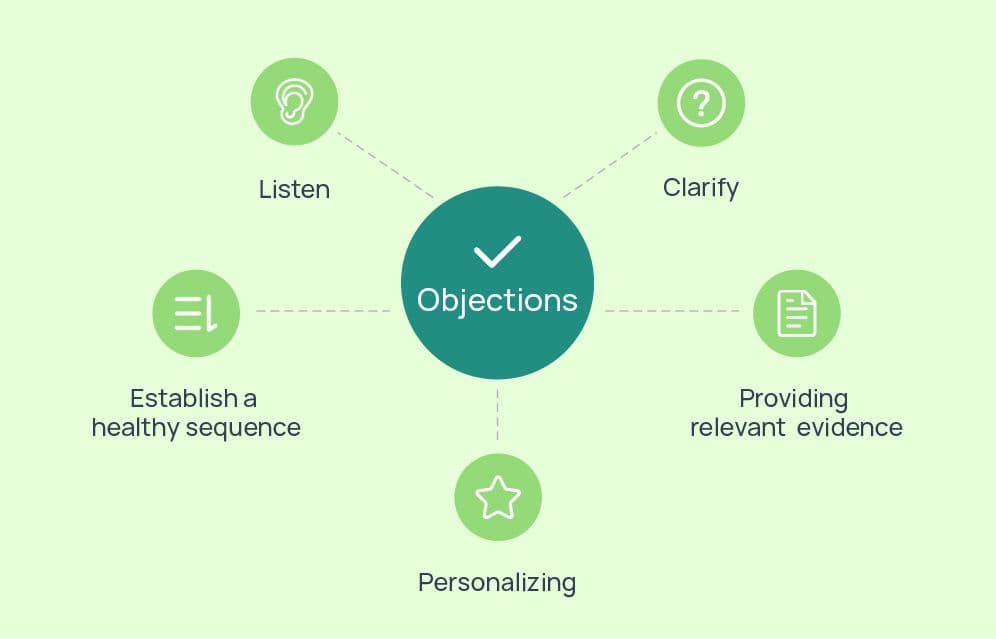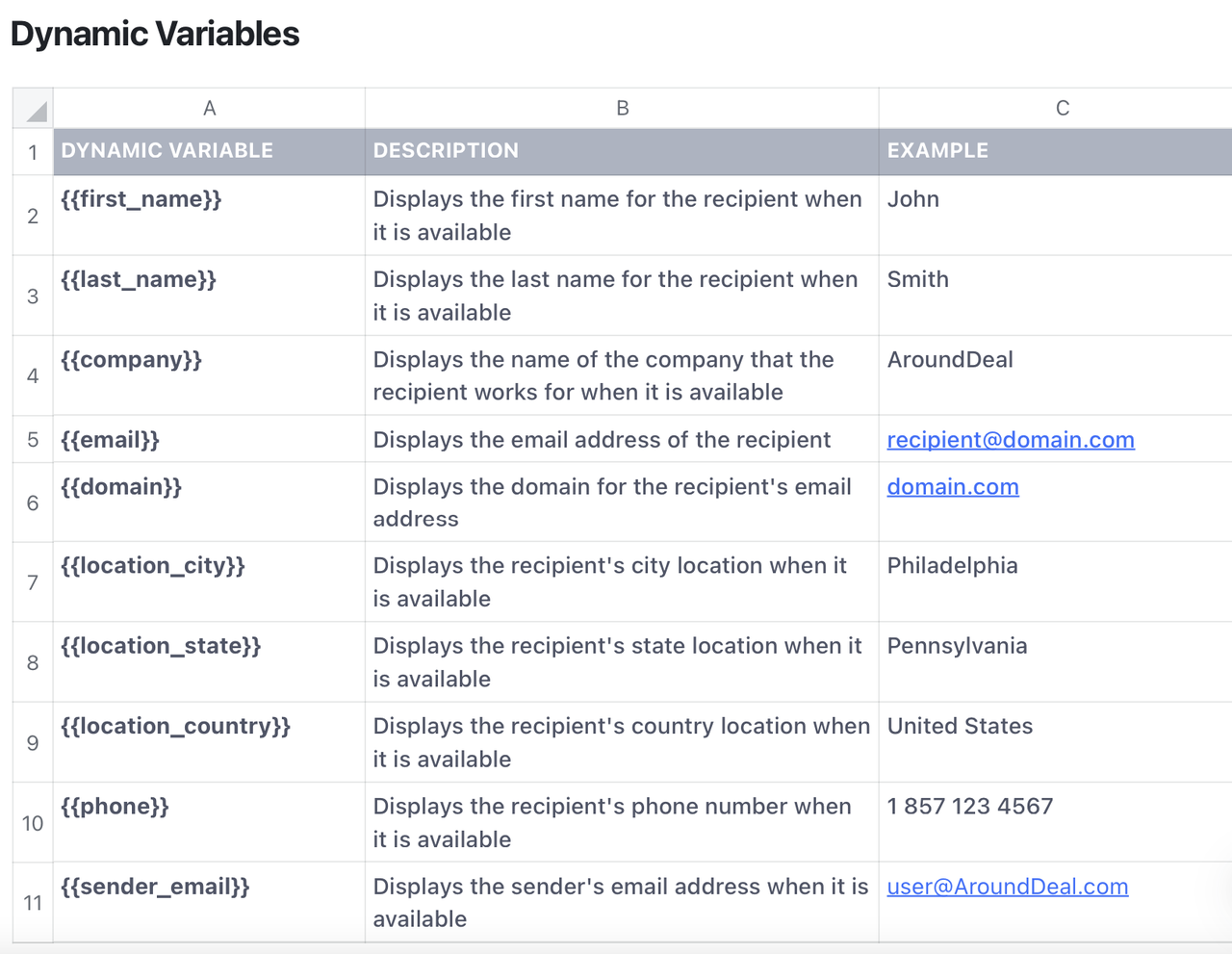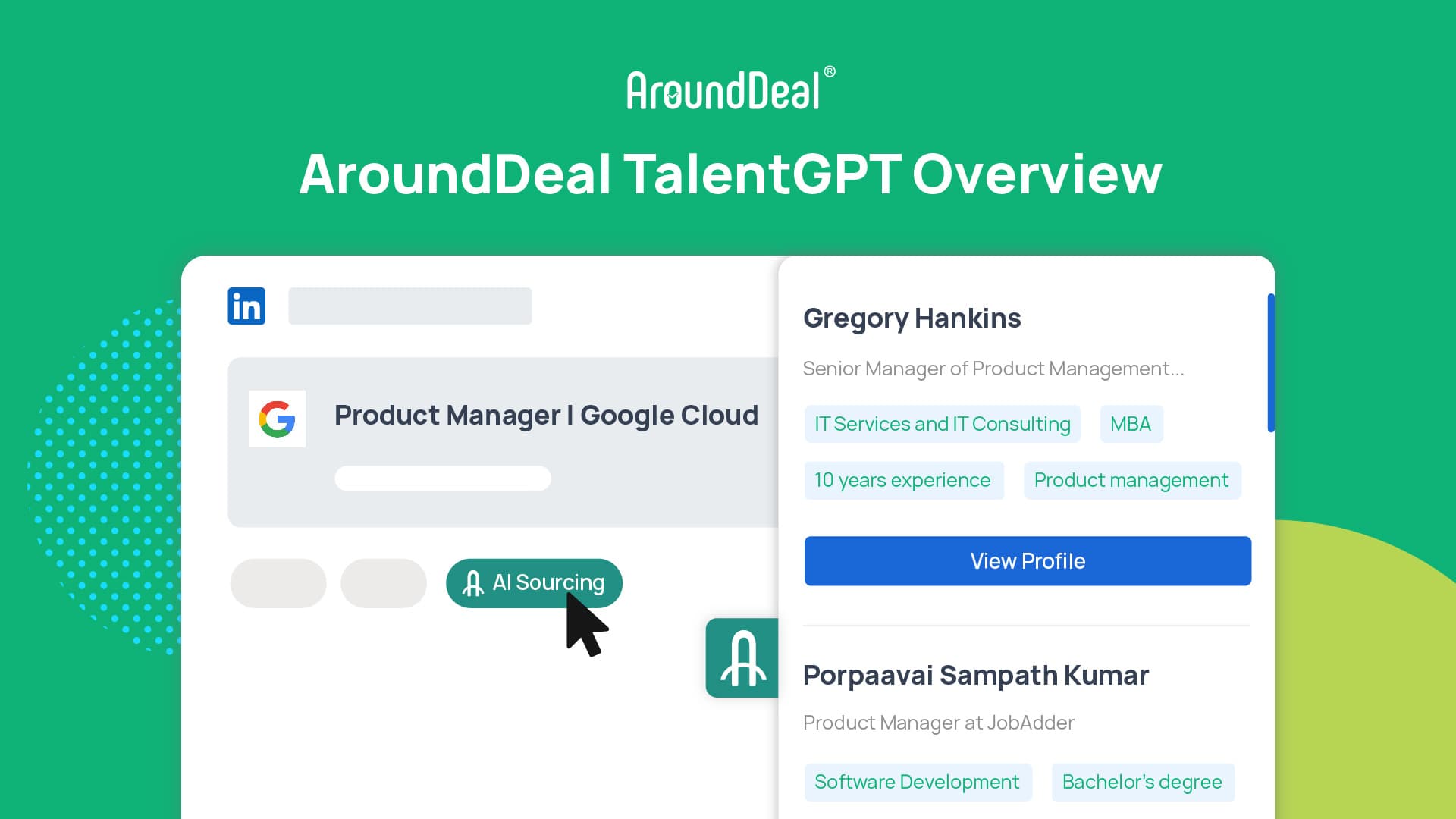- Blog /
- features
Turning “No” into “Yes”: Tips for Overcoming Sales Objections
23 May 2023
By AroundDeal

Have you ever found yourself in a situation where you're trying to recommend a product or service to a potential customer, but they seem to have a laundry list of objections?
How did you feel at that time? Were you feel frustrated? Did you think it is a symbol of failure?
Although it can be tough to navigate these types of conversations, especially if you're not sure how to address their concerns without sounding pushy or dismissive, trust me, sales objections can be a good symbol of asking for more information.
So don't worry - in this blog, we'll walk you through some practical strategies for handling sales objections. Whether you're a salesperson or a business owner, these tips will help you build trust and close more deals. Now, let's get started!
What does a Sales Objection Mean?
A sales objection is an expression of resistance or doubt from a potential customer towards a product, service, or a sales pitch. It is a natural and common part of the sales process, as customers typically have questions, concerns, or doubts before making a purchase decision.
A study by HubSpot found that the most successful salespeople spend 35% more time on closing than their less successful counterparts. This indicates that being able to address sales objections effectively is a crucial part of the sales process.
According to a survey by Richardson Sales Training, 80% of sales require at least five follow-up calls after the initial meeting(5 Follow-Up Email Templates After You've Contacted Someone On LinkedIn), and nearly half of all salespeople give up after just one follow-up. By addressing objections effectively and continuing to follow up, salespeople can increase their chances of closing the sale.
In a study by Gong.io, a conversation analytics company, it was found that successful salespeople handle objections differently than their less successful counterparts. They spend more time asking questions, responding with empathy, and discussing the implications of the objection. By doing so, they are able to better address the customer's concerns and increase their chances of closing the sale.
So, it is all evident that effectively addressing sales objections can significantly improve the likelihood of closing a sale.
Seven Main Factors for Sales Objections Happening
- Price: This is a common objection where customers may feel that the price of the product or service is too high or they may not see the value of paying the price for the product.
- Need: Customers may not feel that they have a need for the product or service or may not understand how it can benefit them.
- Timing: Customers may not be ready to buy at the current moment due to budget constraints, or they may be waiting for a better time to purchase.
- Competition: Customers may be considering other options or products, which can create objections based on the features, pricing, or benefits of those competing products.
- Trust: Customers may not trust the company, the product, or the salesperson, which can cause objections related to the reliability or effectiveness of the product or service.
- Risk: Customers may perceive some level of risk in making a purchase, whether it's related to the product's effectiveness, the company's reputation, or the potential for future costs or issues.
- Personal preferences: Customers may have personal preferences or biases that make them hesitant to purchase a particular product or service.
How to Deal with Sales Objections? Only 4 Steps!
STEP 1 : Listen actively to the customer’s objections and empathize with their concerns.
STEP 2 : Clarify the customer's objections and ask open-ended questions to gain a deeper understanding of their needs and priorities.
STEP 3 : Make responses to customers flexibly through the following ways:
(1) Address the objections directly by providing relevant information or evidence to alleviate the customer's doubts.
(2) Use social proof, such as customer testimonials or case studies, to demonstrate the value and benefits of the product or service.
(3) Offer alternative solutions or options to help the customer find a better fit for their needs.
(4) Close with a call to action that encourages the customer to take the next step, such as trying a demo or scheduling a follow-up call.
(5) Use humor or storytelling to disarm the customer and create a positive and memorable interaction that can help overcome their objections.
STEP 4 : Confirm whether your response satisfy your customers’ concerns by asking them if they need further explanations.
How Can AroundDeal Help When You Encounter Sales Objections?
First, leverage AroundDeal's Engagement feature to maintain communication with your targeted customers. Instead of leaving them to dwell on their objections alone, establish a healthy engagement sequence or create specific outreach tasks to engage them across multiple channels and touchpoints. All of these activities can be seamlessly carried out within our all-in-one engagement platform.
Click here to learn more about "How to Create an Outbound Sales Sequence That Works?" and "How to Build the Sales Sequence with AroundDeal in 1 Minute?"
Secondly, sales repres are often faced with multiple business opportunities at the same time, which can make it easy to overlook the importance of personalizing messages to prospects. Simply sending outreach emails in bulk can give the impression that the message is not tailored to the recipient, which can hurt your chances of overcoming sales objections.
However, with AroundDeal's dynamic variables, you can easily personalize emails for individual contacts using information from our database, such as the time of day or the company that the contact works for. These variables can be leveraged in many parts of an email template, including the subject line and body copy.
Check out our guide to learn how to use dynamic variables in AroundDeal.

Thirdly, when responding to customer doubts, you can also leverage AroundDeal's A/B test function to determine which email content, including relevant information or evidence, is most effective in attracting prospects. The advantages of A/B testing are particularly relevant for sales representatives who are often faced with challenging sales objections.
With AroundDeal's A/B test function, sales reps can quickly and easily test different email templates and track which version generates the best response. This enables sales reps to refine their sales approach and ultimately increase their chances of closing deals.
Here Are Five Typical Sales Objections and Corresponding Solutions
“It's too expensive.”
You can address the customer’s concerns by emphasizing the value and benefits of the product or service, such as explaining how it can help save money in the long term or increase their return on investment.
“I’m not interested right now.”
You should acknowledge the customer's objection and ask if there's a specific reason they're not interested. Offer to follow up later when their circumstances or needs may have changed.
“I need more time to think about it.
You should respect the customer's decision and ask if there's any additional information or concerns you can address to help them make a decision. Offer to follow up later to see if they have any further questions or if their situation has changed.
“I don't think it will work for me.”
You need to ask the customer to elaborate on their concerns and clarify how the product or service may not meet their needs. Provide examples or use case studies to show how others in similar situations have successfully used the product or service.
“I need to consult with someone else.”
You should ask the customer to provide more information about the decision-making process and the stakeholders involved. Offer to provide additional information or resources that can help them make a case to others.




